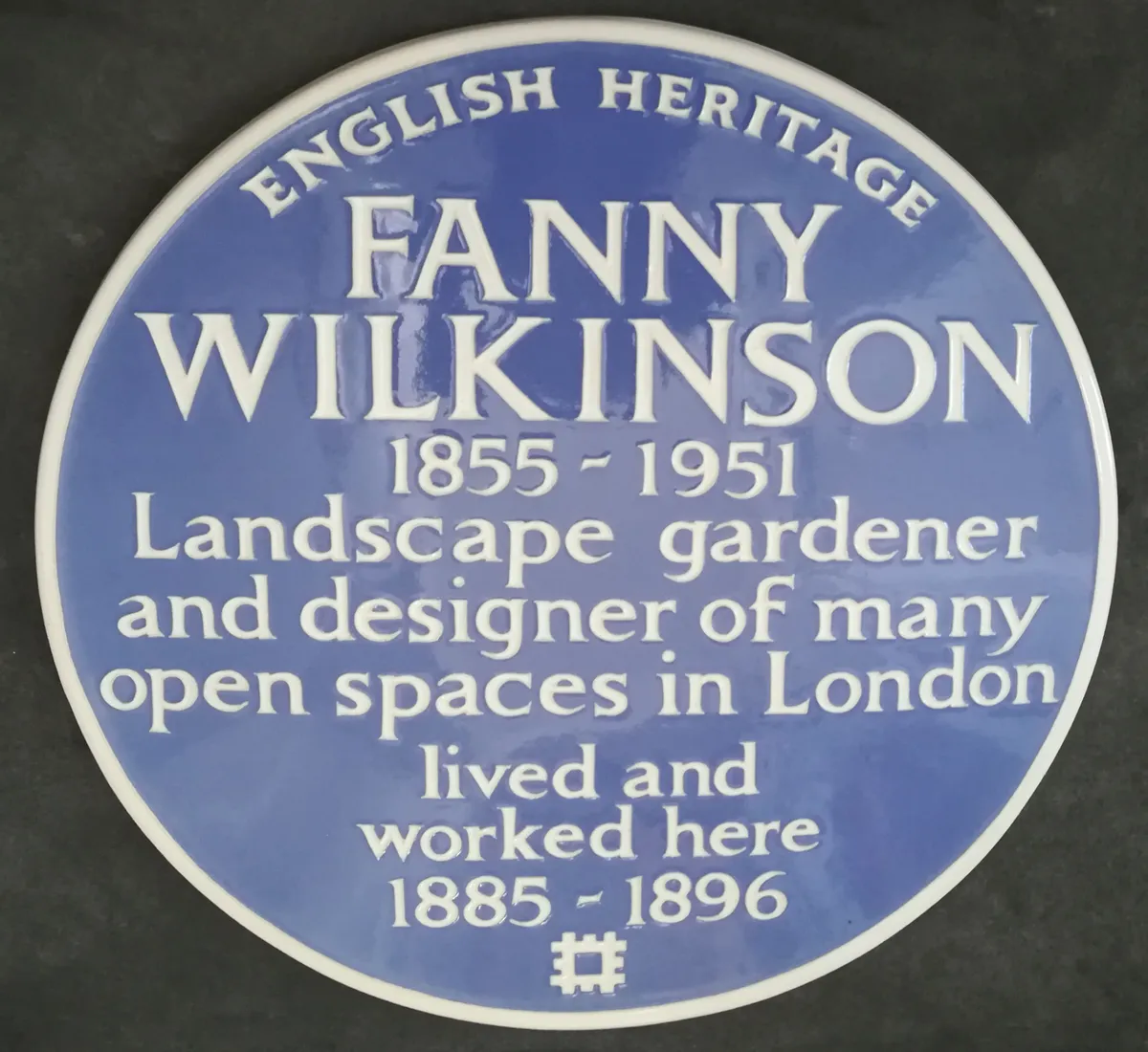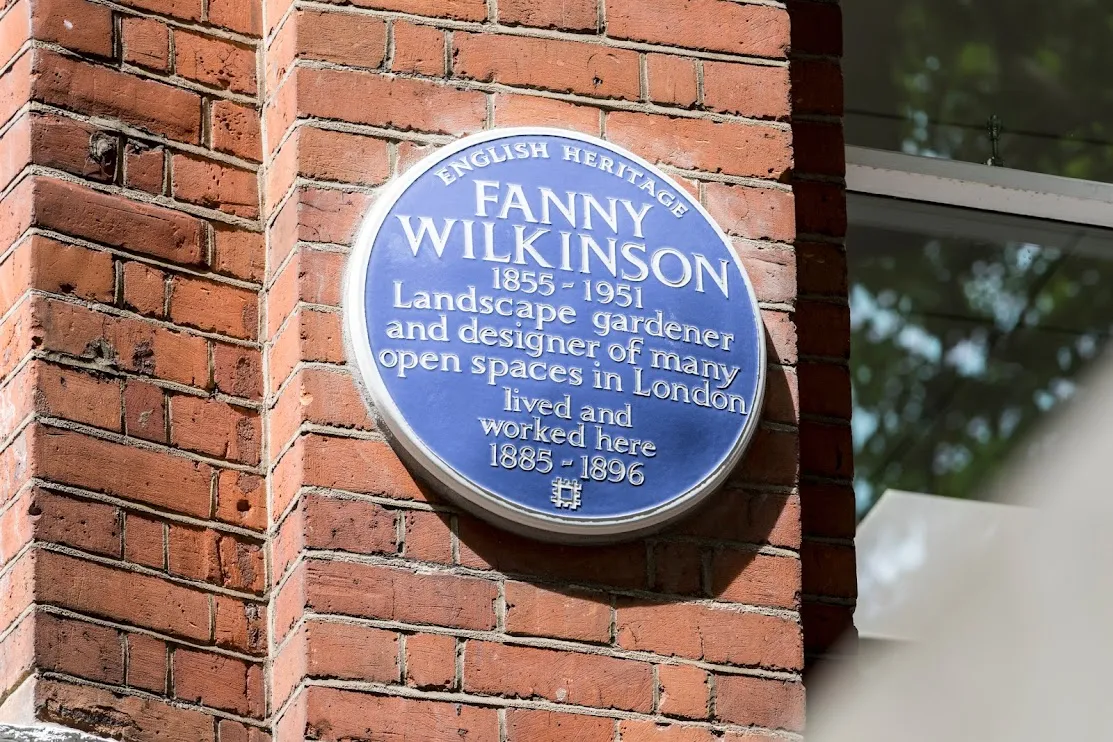This June, English Heritage will be honouring Fanny Wilkinson with Blue Plaques outside her former homes in Bloomsbury, London and at Middlethorpe Hall in York.
You may have never heard of Fanny Wilkinson, but she was a pioneer in the horticulture industry as the first professional female landscape gardener in Britain. Responsible for the original layouts of some 75 parks and green spaces in London, her legacy is evident in the landscape today.

Few people give a second thought to the origins of their surroundings when wandering through places like Vauxhall Park or Meath Gardens and might be surprised to learn they were created by a woman in the 19th century.
Born in 1855 in Manchester to upper-middle class parents, a future career as a landscape designer certainly wouldn’t have been expected of Fanny when she was growing up. She was the eldest of six siblings and was educated privately and abroad.
Few details are known about her early life as she left no written records of her work, private correspondence or direct descendants. It is purely by chance that we happen to know of her later achievements now, as historian and author Elizabeth Crawford came across her while working on a project about the Garett sisters, who were women’s suffrage campaigners and good friends of Fanny.
After her father’s death in 1878, the family moved from Manchester to Middlethorpe Hall; with its extensive gardens this was the perfect place to develop an interest in horticulture. Indeed, it was here that Fanny began to ‘devote [herself] to gardening in a practical way’ (Women’s Penny Paper, 8 Nov 1890). Although domestic gardening was well established as a female pursuit, professional training was at the time reserved for men.

Undeterred, Fanny applied for an 18-month course at the Crystal Palace School of Landscape Gardening and Practical Horticulture. She was the first woman to attempt to enrol on the course and her acceptance was hard won, but by 1883 she had completed it and was searching for suitable employment.
Although the exact dates of her appointments are unclear, in the 1880s Fanny became the landscape gardener for Miranda and Octavia Hill’s Kyrle Society and was also elected an honorary landscape gardener for the Metropolitan Public Gardens Association (MPGA).
Both institutions had been set up with the intention of bringing better access to green spaces and gardens to the people of London, especially those in the most deprived districts. Particularly protecting areas from building developments and giving a new lease of life to wasteland and disused graveyards.
I know my profession and charge accordingly, as all women should do
It was not always an easy road for Fanny as a professional woman. In the Women’s Penny Paper interview of 1890, she spoke of how it could be difficult working with a team of male gardeners under her instruction as they ‘occasionally imagine they know better, and they are often stupid and pigheaded.’ It was over a year before the MPGA, on Fanny’s insistence, dropped the ‘honorary’ aspect of her role and agreed to start paying her and put her employment on a formal basis. In response to another question in the 1890 interview, she said 'I certainly do not let myself be underpaid as many women do. There are people who write to me and think I will ask less than a man. That I will never do. I know my profession and charge accordingly, as all women should do.'
In spite of the barriers she faced, Fanny forged a very successful career for herself over the next 20 years, creating over 75 public gardens across London. These spanned across the city from Camberwell to Paddington and many of them are still in use today.
In 1902, Fanny became the first female President of Swanley Horticultural College, where she encouraged other women to take up the profession. Her legacy was secured not only through the many parks she designed but through her work in making the industry more inclusive.
It’s wonderful to see Fanny Wilkinson receiving the recognition she deserves through the English Heritage Blue Plaque scheme, and hopefully this will lead to her work becoming more well known.
